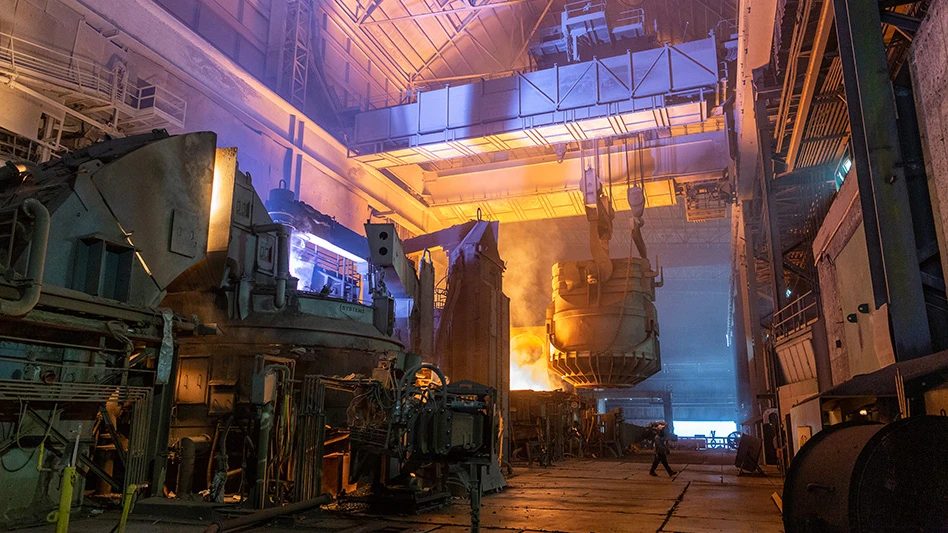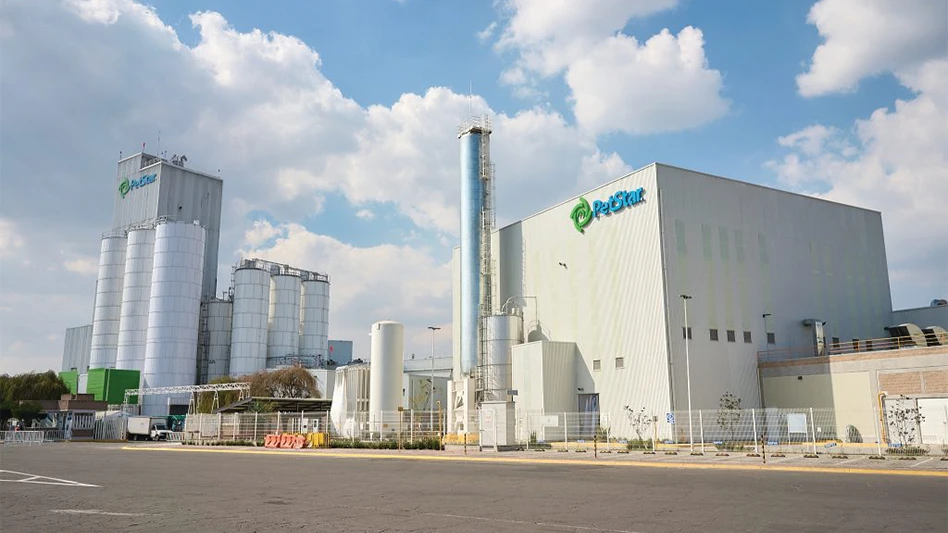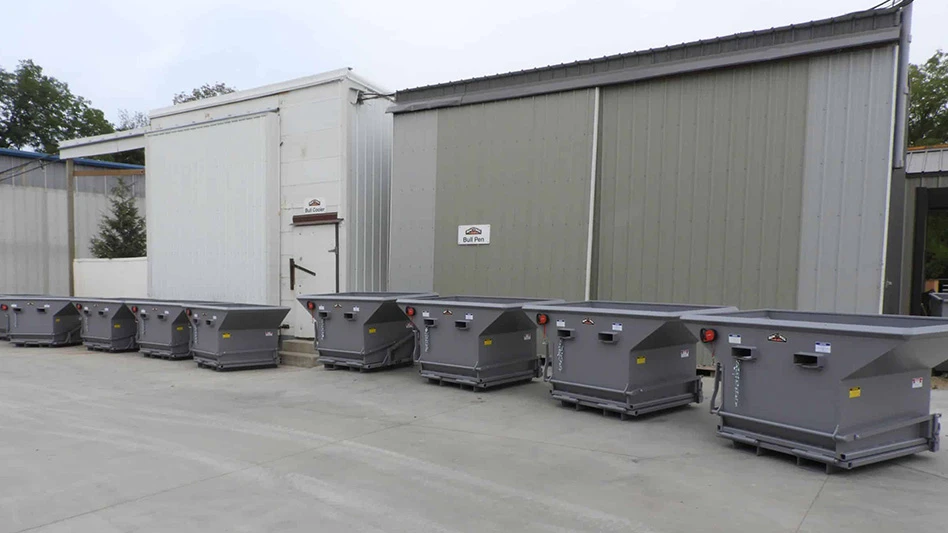Even before a series of financial crises in Asia reduced global demand for steel, the word “overcapacity” was often heard in reference to the steel industry.
When the Asian crisis curtailed steel demand in several developed and developing nations, that overcapacity situation was exacerbated, tilting the supply-demand equation even further off kilter.
The result? A glut of steel coils, beams and bars that has been seeking a home in the world’s healthiest (and arguably freest-trading) market: the NAFTA market of the United States, Canada and Mexico.
For the American steel industry, this has meant competing with a product it says is being dumped into North America at a cost below production. For the American ferrous scrap industry, this has meant a diminished demand for its products and a price structure that plummeted rapidly in a five-month span.
THE STEEL POURS IN
As the Eastern Hemisphere’s economy slowed to a crawl, steelmakers from Korea, Japan and other east Asian nations confronted vanishing markets in their home countries. A Russian currency and fiscal crisis soon added another nation to the roster of those with raw materials and primary products infrastructures in place, but few nearby viable manufacturers to purchase the materials.
A lopsided global picture began creating havoc in commodities markets in what is otherwise a relatively healthy economy in the western hemisphere. The laws of supply and demand proved that they were in place on a global scale as excess supply in one half of the world soon became—at least in the eyes of North American metals producers—excess supply in the other half of the world as well.
While most types of metals were affected by the import onslaught, the North American steel industry (and its supply base, which includes the ferrous scrap industry) has almost certainly been the hardest hit. In the early months of 1998, industry analysts and observers pointed to warning signs of an impending glut of imported steel.
Even for calendar year 1997, the U.S. imported nearly 7% more steel than it did the year before. Due to a global economy that was more balanced throughout most of that year, the U.S. at least enjoyed some semblance of an export market, shipping more than six million tons overseas at the same time it was importing 31 million tons of steel.
American steelmakers, it should be noted, are experienced in taking cases to the International Trade Commission (ITC) and other bodies that review trade complaints. In late 1997, the ITC upheld a complaint from four U.S. makers of carbon plate steel who contended that steelmakers in China, Russia, South Africa and the Ukraine were dumping cut-to-length carbon steel into the U.S.
That isolated complaint would soon seem trifling compared to what was about to happen. As 1998 dawned, the seriousness of the economic troubles in Asia—and the fact that those troubles would be lingering—became more apparent.
• In January, Korea’s Hyundai group cancelled long-held plans to build a new integrated steel mill in 1998. Clearly an overcapacity situation had been acknowledged.
• By April of 1998, the American Iron and Steel Institute (AISI), Washington, announced that it had begun “stepping up its lobbying efforts to ensure that the U.S. steel industry and its workers do not become the victims of [the Asian] crisis.”
• At a June steel industry event, virtually every industry analyst and executive who addressed attendees warned of tough times ahead, using phrases such as “death spiral” to describe prices. The event itself, dubbed by its sponsors American Metal Market and PaineWebber’s World Steel Dynamics subsidiary as the “Steel Survival Strategies” conference, was subtitled as a “Steel Wake-Up Call.”
• In the summer of 1998, the AISI began undertaking what it termed its 1998 Trade Competitiveness Communications Campaign. The radio and on-line campaign—targeted toward “opinion leaders” in the Washington, D.C. metro area—was designed to “inform and educate government decision makers . . . on the urgency of maintaining fair trade laws and strictly enforcing them to prevent injury to the North American steel industry.”
• By early August of 1998, the AISI and other steel industry voices began backing up their fears with numbers. In a status report released in August, AISI president Andrew G. Sharkey III declared that “the U.S. steel industry is facing an emerging steel trade crisis, with total steel imports up 7.2% from 1997’s record pace; total finished steel imports up 14% through May; finished steel imports from Asia up 79% from last year’s very high levels; and finished steel imports from the [former Soviet Union] . . . up an additional 24% from 1997’s record levels.”
• August 1998 marked a record month for steel imports into the U.S., as 4.4 million net tons were unloaded at American ports. That figure was up from the 4 million tons imported in July 1998 and was 78% higher than the 2.5 million tons imported in August of 1997. “The August figures clearly demonstrate the unprecedented level of steel being dumped into the U.S. market,” the AISI’s Sharkey said at the time.
• By fall, the low pricing structure and increased competition began taking its toll on the bottom lines of North American steel companies. Acme Metals, Riverdale, Ill., and its Acme Steel Co. International Inc. subsidiary filed for Chapter 11 bankruptcy in late September. Acme president and CEO Stephen D. Bennett cited “greater than anticipated losses due to the rapid deterioration in steel demand and selling prices.”
Announcements of layoffs and operations cutbacks became more common. LTV Corp. announced the shut down of a steelmaking and rolling facility within its Cleveland works, resulting in some 300 layoffs. North Star Steel Co. cut 185 jobs at its wire rod mill in Beaumont, Texas.
HITTING THE BRAKES
Steelmakers in the U.S. don’t act as one when it comes to production and pricing decisions. But keeping prices much higher than the price of the steel pouring into U.S. ports was not an option for any of the companies.
The decision making, then, for each company was in terms of whether or not to scale back production. If domestic steel production figures compiled by the American Iron and Steel Institute are accurate, several steel companies reached the same decision at about the same time.
According to the AISI, steel mills in the U.S. produced steel at between 88% and 96% of their capacity each week between the weeks of January 3 and June 13, 1998. After producing at a 91% rate for the week of June 13, production went down 120,000 tons the week of June 20, with the capacity rate dropping to 86%—a new low for the year. The next week, production was off another 180,000 tons, with the capacity rate dipping to 78.6%.
For the rest of 1998, production rates occasionally rallied back into the high 80s, but then settled between 72% and 79% for November and early December. The reduced production rates, of course, have resulted not only in layoffs within the steel industry but in reduced scrap buying.
After some relatively quiet suffering (due to a lack of attention from the national print and broadcast media and a similarly pre-occupied Congress and Clinton Administration), some action at the federal level offered hope as 1998 closed. Voluntary agreements have been reached with several of the steel exporting nations to cap the amount of steel exported in 1999.
How soon the North American steel industry can get back up to (and perhaps surpass) its 1997 levels of production remains to be seen. “If [steel dumping] stopped today, we’ve still got three to four months of float in the system,” estimates Steel Recycling Institute president William M. Heenan Jr.
Another question is whether or not any action has been taken to prevent a reoccurrence of the dumping that triggered the late 1998 steel and scrap pricing plummet. Heenan says that domestic steel makers don’t want to erect impenetrable trade barriers, but they would like to see stricter and more rapid enforcement of current anti-dumping laws.
“The situations in Russia and Brazil are difficult, but we don’t want the American steel worker to bear the brunt of solving the world’s economic problems,” says Heenan.
(The author is editor of Recycling Today.)

Explore the January 1999 Issue
Check out more from this issue and find your next story to read.
Latest from Recycling Today
- Autocar releases Smart Battery Cable to advance refuse truck fire safety
- PLASTICS launches Positives of Plastics website
- Impact Air Systems launches compact ZAC400
- PCA to shut down paper machines at Washington containerboard mill
- BMRA provides landfill guidance for UK shredder operators
- Fornnax high-capacity tire recycling plant
- EU introduces measures to secure raw materials, strengthen economic security
- US Steel to restart Illinois blast furnace





